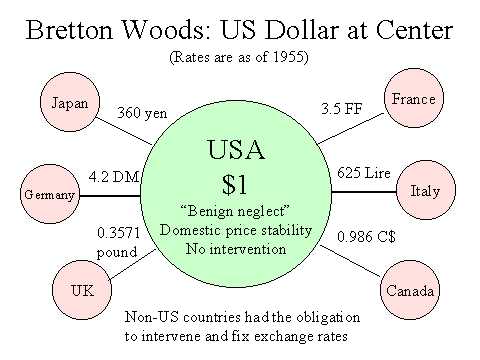A history of the US fiat currency
1933 - President Franklin D. Roosevelt had gold confiscated and people were forced to accept paper money for their gold. The government needed people to adopt the inflated paper and they used force.
1940s - Bretton Woods Agreement created a collective international currency peg to the U.S. dollar which was in turn pegged to the price of gold.
1971 - President Nixon unilaterally cancelled the direct international convertibility of the US dollars to gold. Making the US government in charge of money supply and world money master.
41
348 reads
CURATED FROM
IDEAS CURATED BY
Life-long learner. Passionate about leadership, entrepreneurship, philosophy, Buddhism & SF. Founder @deepstash.
The idea is part of this collection:
Learn more about politics with this collection
The differences between Web 2.0 and Web 3.0
The future of the internet
Understanding the potential of Web 3.0
Related collections
Similar ideas to A history of the US fiat currency
End of the Gold Standard - March 3, 1933 - August 15, 1971
On March 3rd 1933, President Franklin D. Roosevelt closed all the banks in the U.S.A.
Banks held large amounts of Gold which were backing all the available U.S dollars. At those times there was a fixed exchange rate between U.S dollars and Gold.
Gold standard ended officially when pr...
The end game for the US dollar
After the Breton Woods agreement, all the world currencies were pegged to the dollar, which was in torn pegged on gold. But in 1974 the US dropped the gold backing and $ became free-floating. The US maintained their currency supremacy by making sure all the Middle East oil producers would only tr...
Read & Learn
20x Faster
without
deepstash
with
deepstash
with
deepstash
Personalized microlearning
—
100+ Learning Journeys
—
Access to 200,000+ ideas
—
Access to the mobile app
—
Unlimited idea saving
—
—
Unlimited history
—
—
Unlimited listening to ideas
—
—
Downloading & offline access
—
—
Supercharge your mind with one idea per day
Enter your email and spend 1 minute every day to learn something new.
I agree to receive email updates


